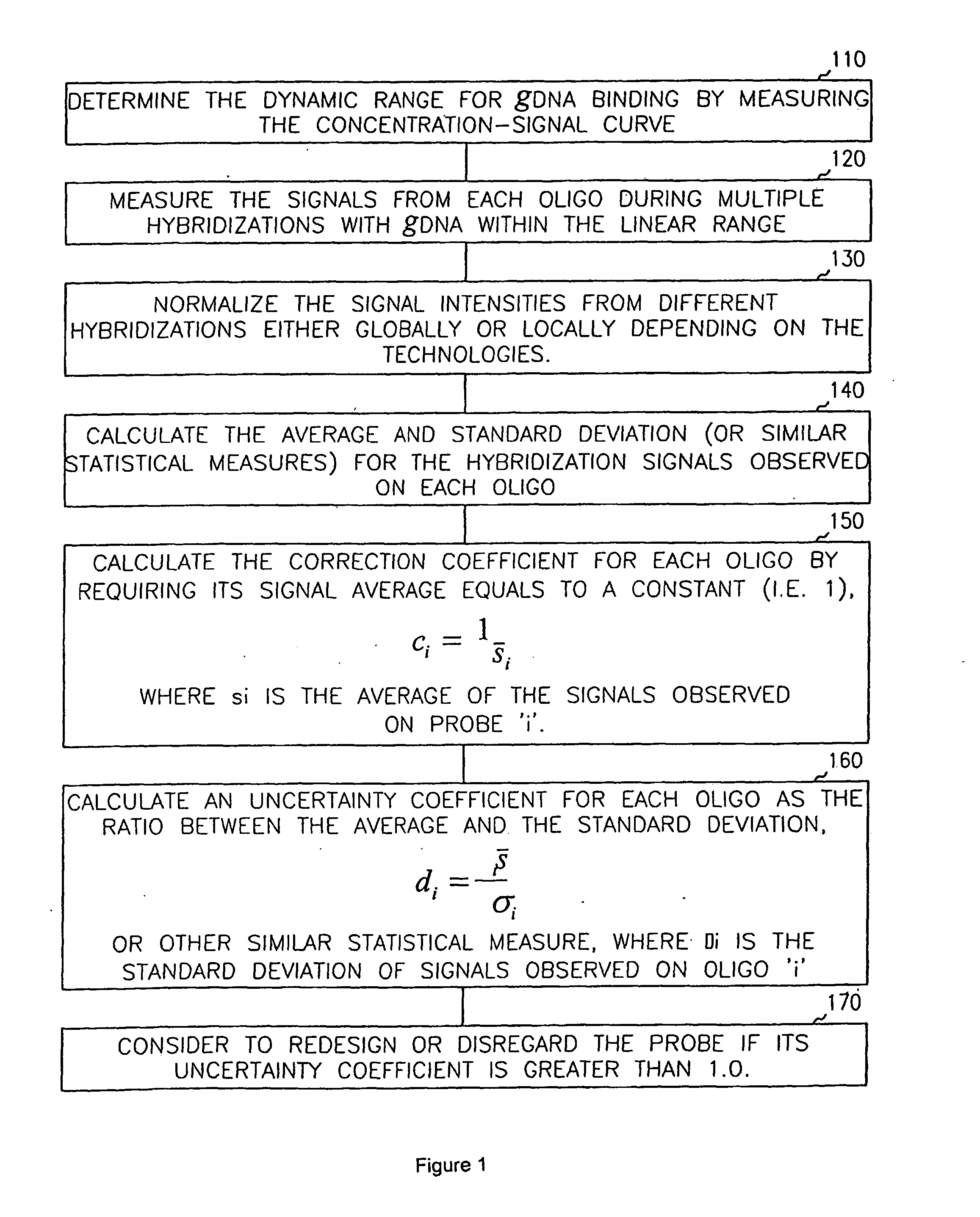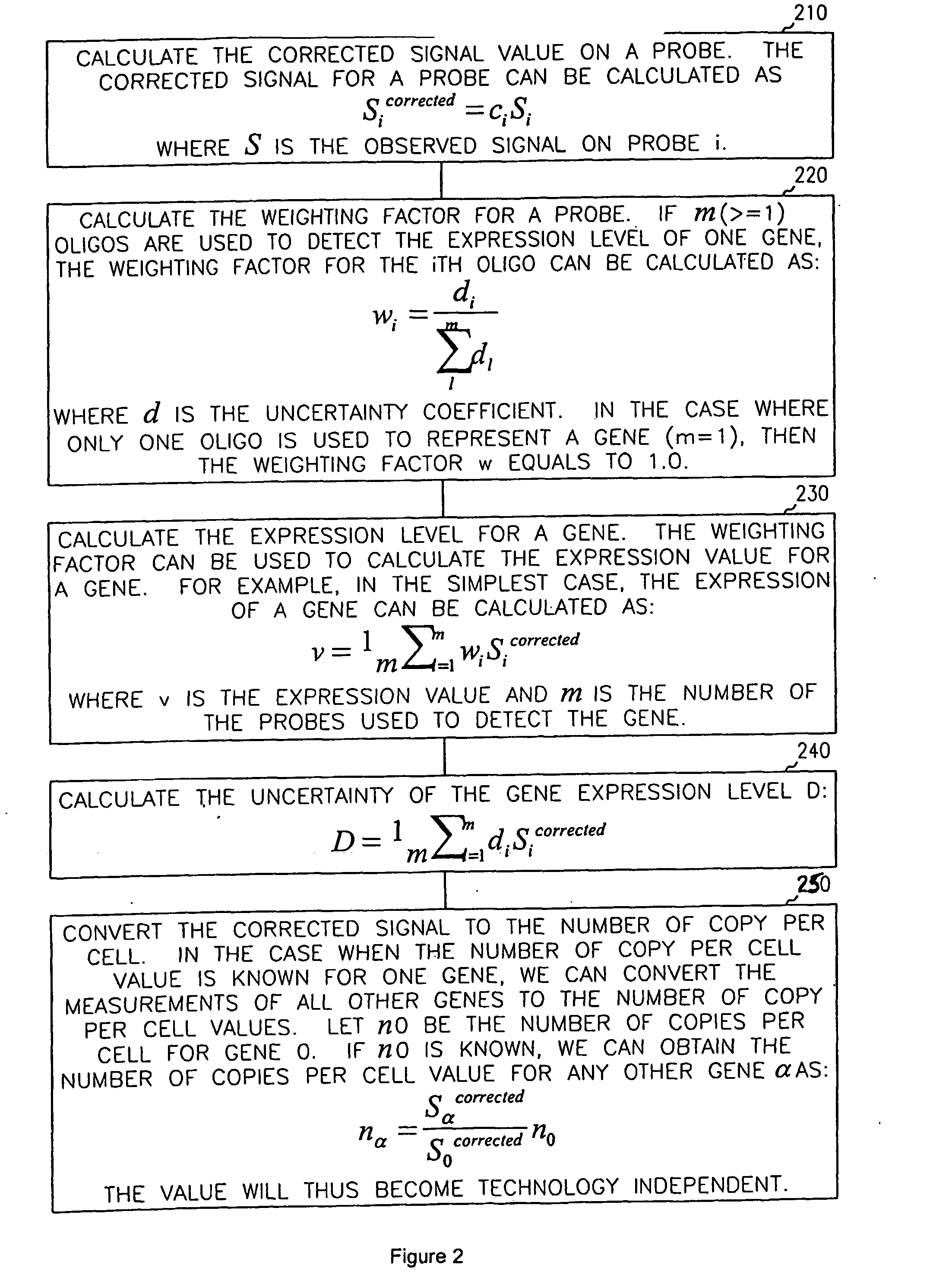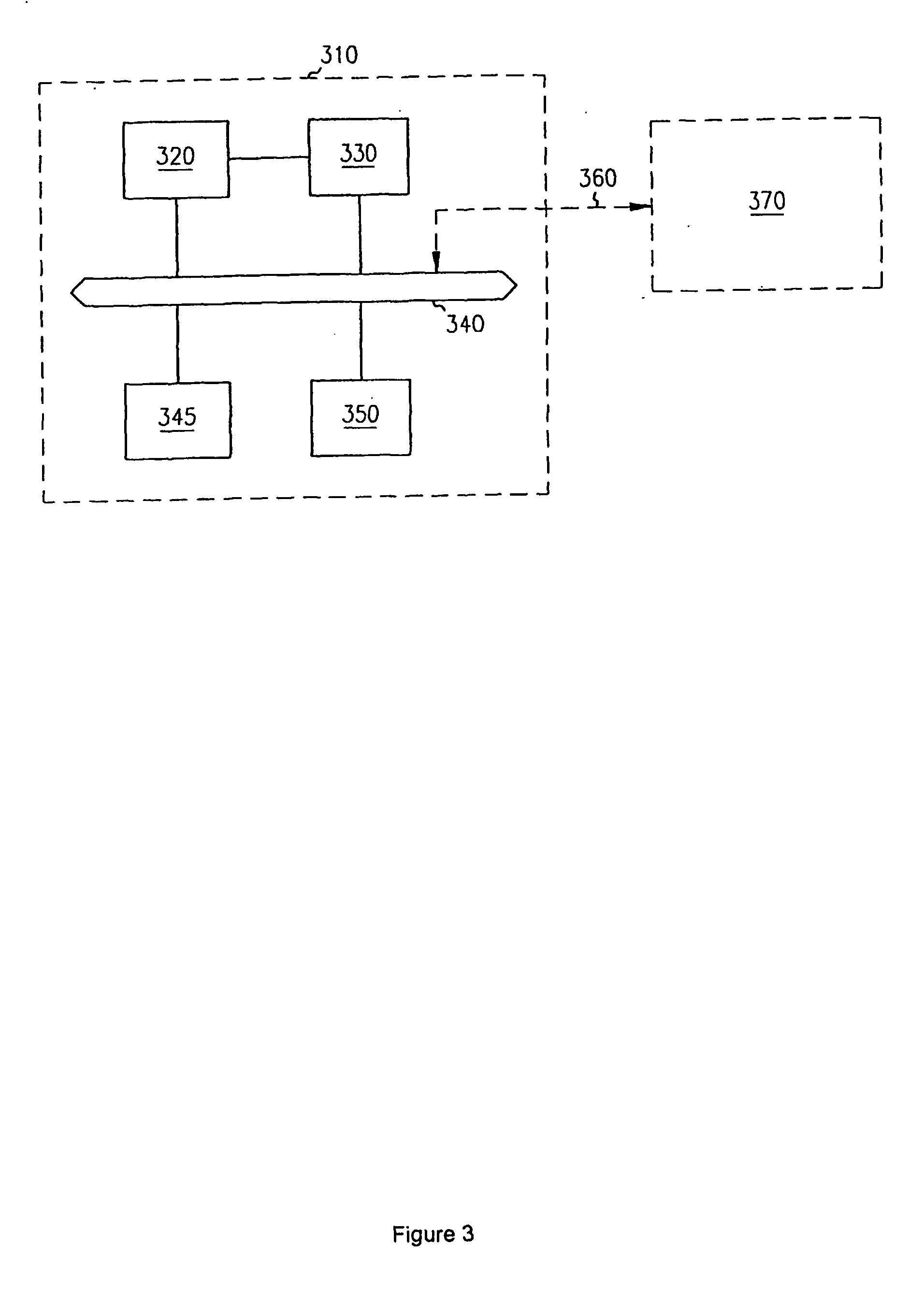Probe correction for gene expression level detection
a gene expression and detection level technology, applied in the field of probe correction for gene expression level detection, can solve the problems of difficult comparison of results from different probes, serious obstacles to accurately mining and systematically integrating measurements,
- Summary
- Abstract
- Description
- Claims
- Application Information
AI Technical Summary
Benefits of technology
Problems solved by technology
Method used
Image
Examples
case3
For each probe in set one, calculate its ave and sd, calculate CV=sd / ave
If CV<0.5*CV1(0.34*0.5=0.17), discard this probe
For each probe in set two, calculate its ave and sd, calculate CV=sd / ave
If CV<CV2*0.5(0.14*0.5=0.07)), discard this probe cal_raw_ave_all_concern.pl
Same as Case2
Get discarded probe file from set1 and set2, find the intersection of these two sets, use it as an input of step 4, the other input of step 4 is a dummy input.
Total 410 probes discarded.
Case4:
Find average of each chip in set-two experiment (4,5,6 micrograms) For each probe in set two, calculate its correlation coefficient (CC) with the average of each chip in set two.
If CC<=0.5 discard this probe
Get discarded probe file, use it as an input of step 4. The other input of step 4 is a dummy input.
Total 4896 probes discarded in one embodiment.
concentration_correlation.plInput:1.ave_of_each_concentrationformat: concentration average_of_gene_expression2.discard_threshold (0...
example 1
GeneChip® Standard Protocol
A rice gene array and probes derived from rice RNA extracted from different tissues and developmental stages can be used to identify the expression profile of genes on the chip.
The standard protocol for using the GeneChip® to quantitatively measure plant gene expression is carried out as outlined below:
Quantitation of Total RNA
1. Total RNA from plant tissue is extracted and quantified using GeneQuant (Amersham Biosciences, Piscataway, N.J.) 1OD260=40 mg RNA / ml; A260 / A280=1.9 to about 2.1
2. Run gel to check the integrity and purity of the extracted RNA
Synthesis of Double-Stranded cDNA
Gibco / BRL SuperScript Choice System for cDNA Synthesis (Cat #1B090-019) is employed to prepare cDNAs. T7-(dT)24 oligonucleotides are prepared and purified by HPLC. (5′-
SEQ ID NO: 662)(5′-GGCCAGTGAATTGTAATACGACTCACTATAGGGAGGCGG-(dT)24-3′;.
Step 1. Primer hybridization: Incubate at 70° C. for 10 minutes Spin quickly and put on ice briefly
Step 2. Temperature ad...
example 2
Application of the Present Invention for Global Transcriptome Remodeling During Brassica Seed Pre-Germination
The present invention was applied to enable characterizing global transcriptional regulation during seed pre-germination. The initial steps of seed germination require global changes in the underlying biology of all the cells involved, before the embryo can begin the process of growth and emergence. Pre-germination treatments consisting of partial hydration of seeds are used to improve seed germination vigor. Here we investigate whether Brassica is sufficiently closely related to Arabidopsis to allow use of an Arabidopsis whole-genome microarray to investigate changes in gene expression. Such cross-species microarray hybridization is becoming a well-characterized and accepted technique (Zhu, T., Chang, H.-S., Schmeits, J., Gil, P., Shi, L., Budworth, P., Zou, G., Chen, X. and Wang, X. (2001). Gene Expression Microarrays: Improvements and Applications Towards Agricultural Ge...
PUM
| Property | Measurement | Unit |
|---|---|---|
| fluorescence | aaaaa | aaaaa |
| concentration signal curve | aaaaa | aaaaa |
| threshold | aaaaa | aaaaa |
Abstract
Description
Claims
Application Information
 Login to View More
Login to View More - R&D
- Intellectual Property
- Life Sciences
- Materials
- Tech Scout
- Unparalleled Data Quality
- Higher Quality Content
- 60% Fewer Hallucinations
Browse by: Latest US Patents, China's latest patents, Technical Efficacy Thesaurus, Application Domain, Technology Topic, Popular Technical Reports.
© 2025 PatSnap. All rights reserved.Legal|Privacy policy|Modern Slavery Act Transparency Statement|Sitemap|About US| Contact US: help@patsnap.com



